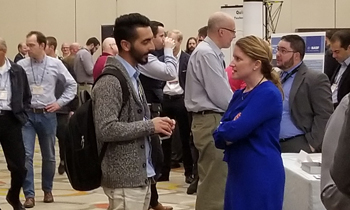
Effect of Humidity on the Flow Properties of Metal Powders
Martin Laloux, GranuTools
The Effect of Hot Working MIM Components
Brodie Van Allen, ARC Group Worldwide
Injection Molding of NdFeB Magnets Using 3D Printed Molds
Tejesh Charles Dube, IUPUI
Fabrication of Soft and Hard Magnetic Components by Metal Injection Molding
DaSeul Shin, POSTECH, Pohang University of Science and Technology
3D Printing of Metals and Ceramics
Jan Sumerel, BASF
Gas Flow Optimization in the MIM Sintering Furnace Using CFD Simulation
Nelson Brito, Verder Scientific
Power Injection Molding Process for Manufacturing a Hexagon Shape Piezoelectric Micropillar Arrays
Hyeok Jun Kwon, POSHTECH
Advanced Corrosion Studies of Laser-Powder Bed Processed 420 Stainless Steel
Luke Spenlau, University of Louisville
What Effects have MIM Materials Made on Consumer Electronics Devices?
Mike Guthrie, Foresee
Heat Cycle Optimization for Additively Manufactured D2 Tool Steel
Mats Persson, Höganäs AB
Profile Extrusion of Highly-Filled Polymers with Tool Steel for Sintering
David Handl, Montanuniversitat
Influence of the Infill Orientation and the Powder Content on the Properties of Zirconia Parts Produced by Fused Filament Fabrication
Philipp Huber, Montanuniversitat
Binder-Jet Printing: Meeting the Standards of Metal Injection Molding
James W. Sears, Carpenter Technology Corporation
Polymer and Powder Characteristics Influencing MIM 2200 (FN02) Rheology and Molding
Dwight Webster, Advanced Metalworking Practices
Application of Advanced Materials in 3C Products
Shin Lee, UNEEC
Metallurgical Considerations with Respect to Cracking of H13 Mold Inserts Produced by Pulsed Laser Powder Bed Fusion
Edem Dugbanoo, McGill University
Breaking Up Is Hard To Do – Making Up Can Be Harder! (Tales of Atomising and Sintering)
Martin Kearns, Sandvik Osprey Ltd.
**Programming is subject to change
Student Presentation To Be Announced
Student Presentation To Be Announced